Are you planning a trip to the Philippines and wondering what to add to your itinerary? Or are you a history buff looking for a new adventure? Either way, the UNESCO World Heritage Sites in the Philippines are a must-visit for anyone interested in culture, history, and natural beauty.
The Philippines has six UNESCO World Heritage Sites, each offering a unique glimpse into the country’s rich history and natural wonders. From the stunning rice terraces of the Philippine Cordilleras to the well-preserved Spanish colonial town of Vigan, these sites are a testament to the country’s diverse cultural heritage.
In this article, you will learn why they are essential to the Philippines. You will also learn about the 10 World Heritage Sites in the Philippines. So, pack your bags, grab your camera, and get ready to explore the best of the Philippines’ cultural and natural treasures.
10 Best Philippines UNESCO World Heritage Sites
The Philippines is home to 6 UNESCO World Heritage Sites, four cultural and two natural. These sites are recognized for their outstanding universal value and are protected under the UNESCO World Heritage Convention. Here are the 10 best Philippines UNESCO World Heritage Sites that you should visit:
1. Puerto Princesa Subterranean River National Park (Palawan)
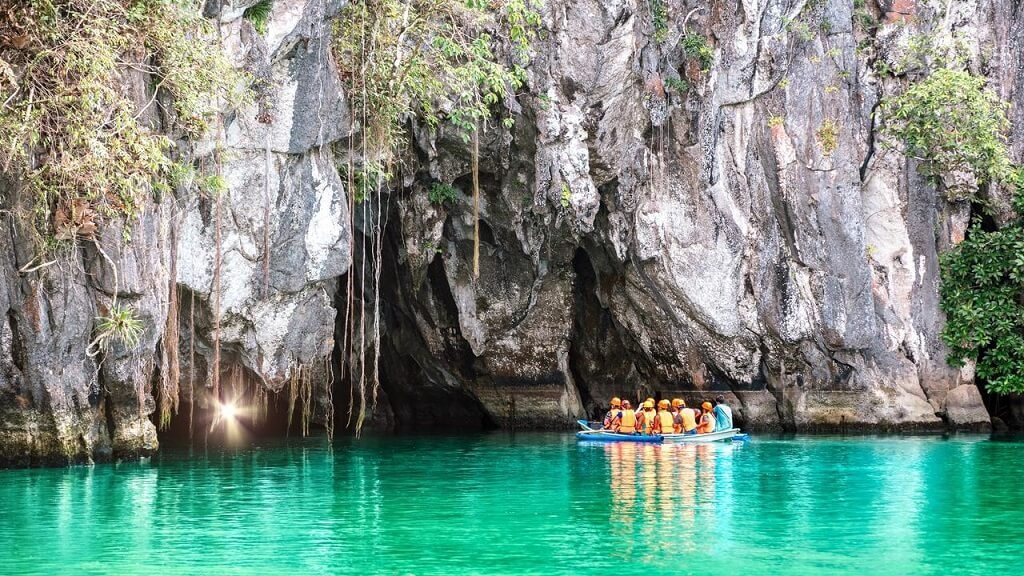
The Puerto Princesa Subterranean River National Park is a protected area in the Saint Paul Mountain Range on the island of Palawan. The park features a limestone karst landscape with an underground river that flows directly into the sea.
It is home to diverse flora and fauna, including the Philippine eagle and cockatoo. The park was inscribed on the World Heritage List in 1999 and named a UNESCO World Heritage Site in 2012.
2. Rice Terraces of the Philippine Cordilleras (Ifugao)
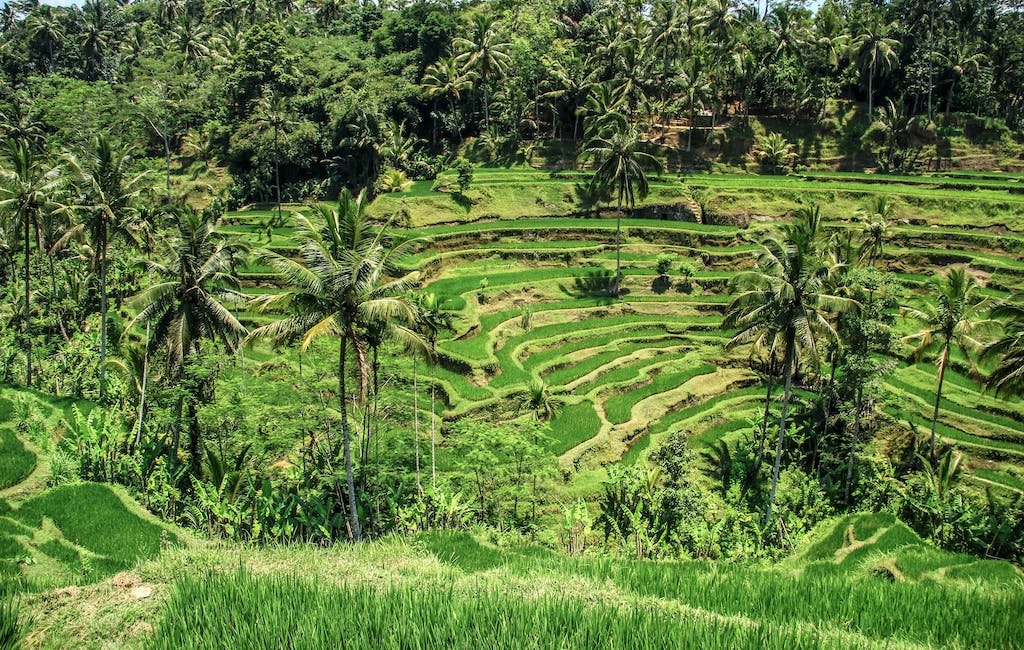
The Rice Terraces of the Philippine Cordilleras are a living cultural landscape located in the northern part of the Philippine island of Luzon. The Ifugao people built them over 2,000 years ago, and have been maintained for generations.
Reaching 1,500 meters above sea level, the terraces are situated in the Philippine Cordillera mountain range. They received the UNESCO World Heritage Site designation in 1999 after being included on the World Heritage List in 1995.
3. Tubbataha Reefs Natural Park (Sulu Sea)
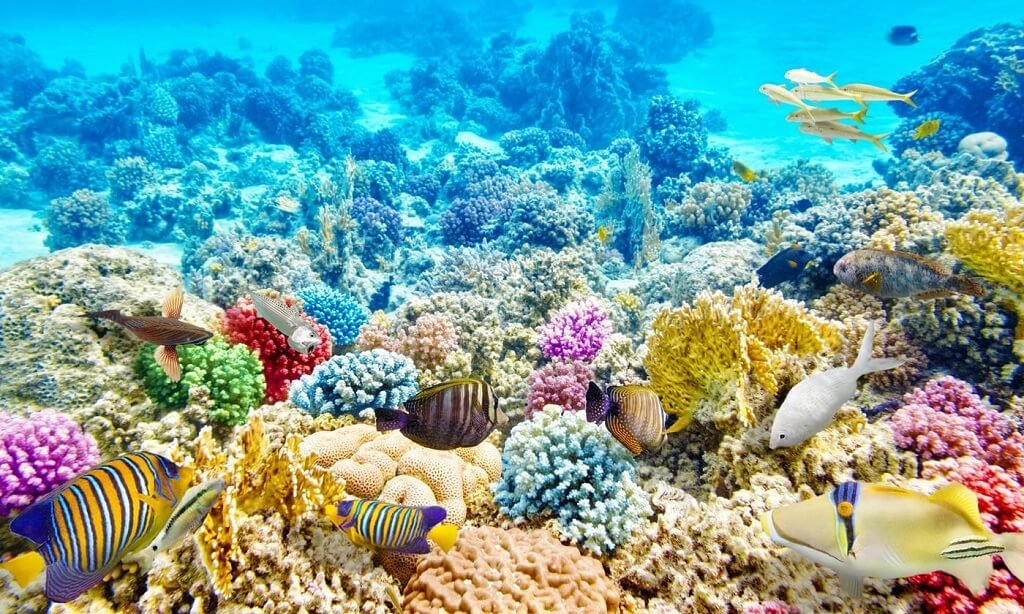
In the Sulu Sea, the Tubbataha Reefs Natural Park is home to a diversified marine ecosystem that includes 360 different species of coral and over 600 different fish. As one of the top diving locations in the world, the park is a protected area. It was included as a World Heritage Site by UNESCO in 1999 after being added to the World Heritage List in 1993.
4. Historic City of Vigan (Ilocos Sur)
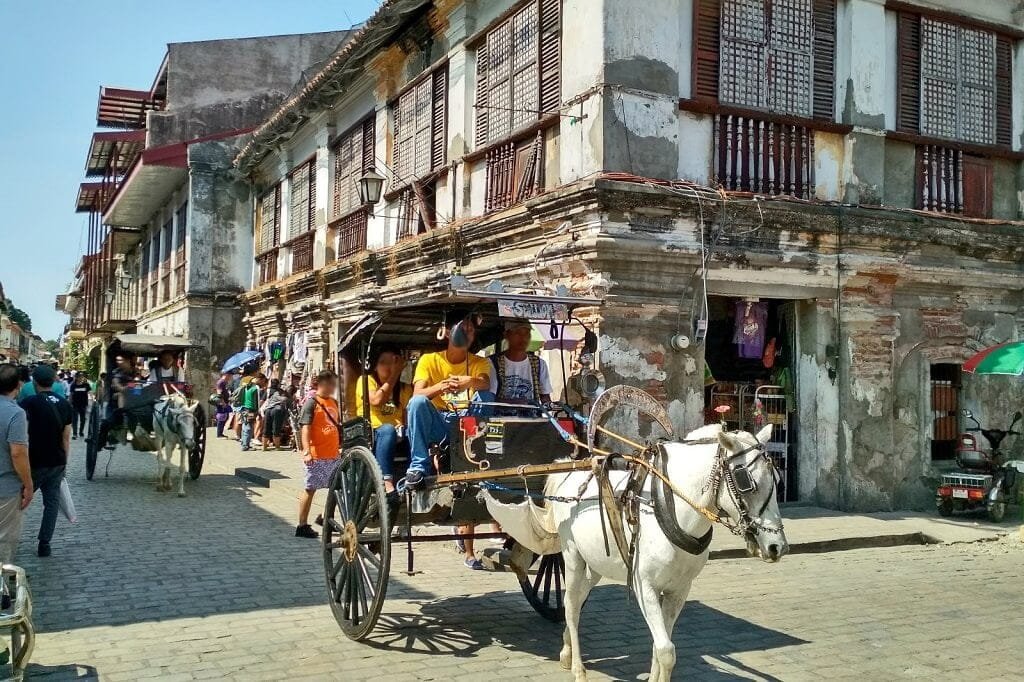
The Historic City of Vigan is a well-preserved example of a Spanish colonial town in Asia. It is located in the northwestern part of the island of Luzon and features a unique blend of Asian and European architecture. The city was inscribed on the World Heritage List in 1999 and named a UNESCO World Heritage Site in 2008.
5. San Agustin Church (Intramuros, Manila)
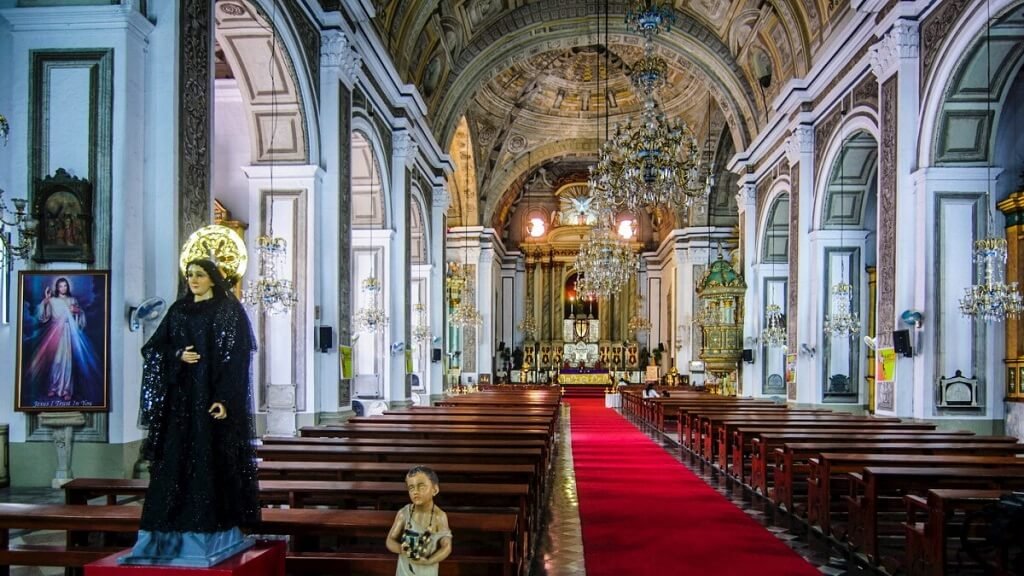
In Manila’s walled Intramuros neighborhood stands the baroque San Agustin Church. Its distinctive fusion of local and European influences was built during the Spanish colonial era in the Philippines. In 1993, the church was added to the World Heritage List, and in 1999, it was designated as a UNESCO World Heritage Site.
6. Paoay Church (Ilocos Norte)
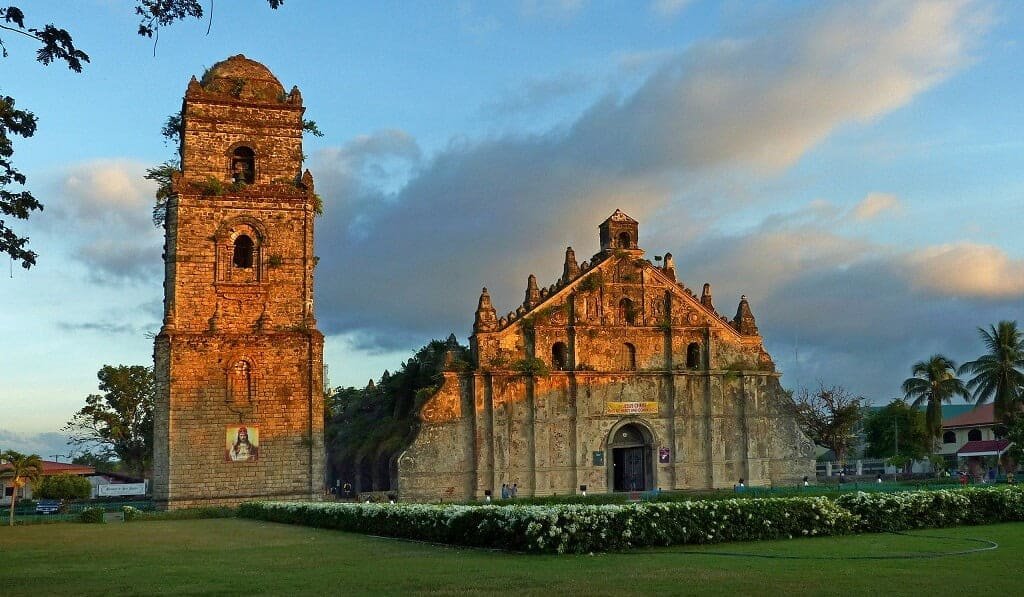
The Paoay Church is a Baroque church located in Paoay in Ilocos Norte. It was built during the Spanish colonial period in the Philippines and features a unique blend of European and local influences. The church was inscribed on the World Heritage List in 1993 and named a UNESCO World Heritage Site in 1999.
7. Mount Hamiguitan Range Wildlife Sanctuary (Davao Oriental)
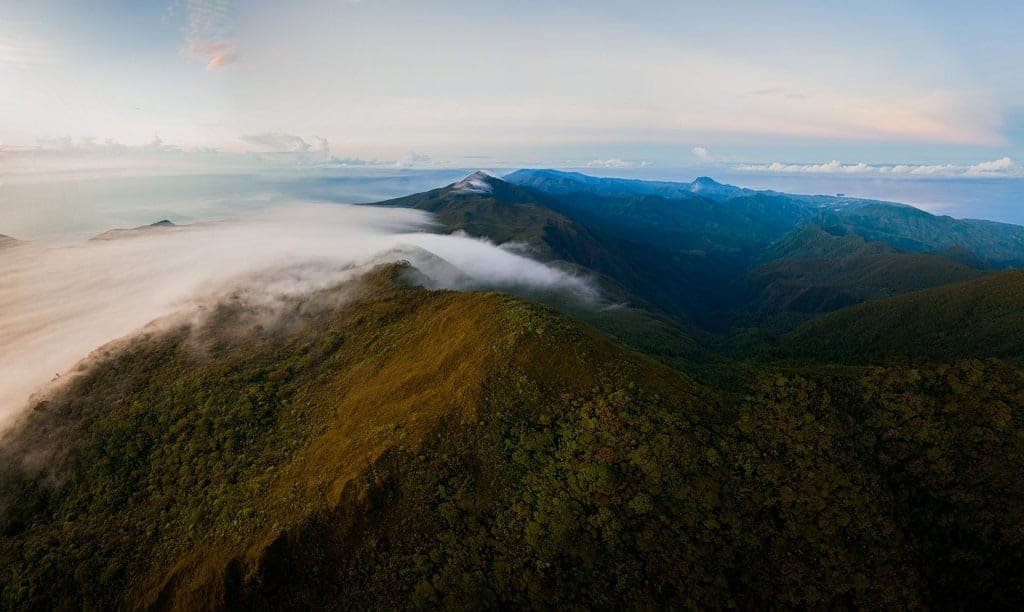
An area of protection in the eastern region of the Philippine island of Mindanao is called the Mount Hamiguitan Range Wildlife Sanctuary. The Philippine eagle and cockatoo are among the many different species of plants and animals that call it home. A UNESCO World Heritage Site was designated for the sanctuary in 2015 after it was included on the World Heritage List in 2014.
8. Miagao Church (Iloilo)
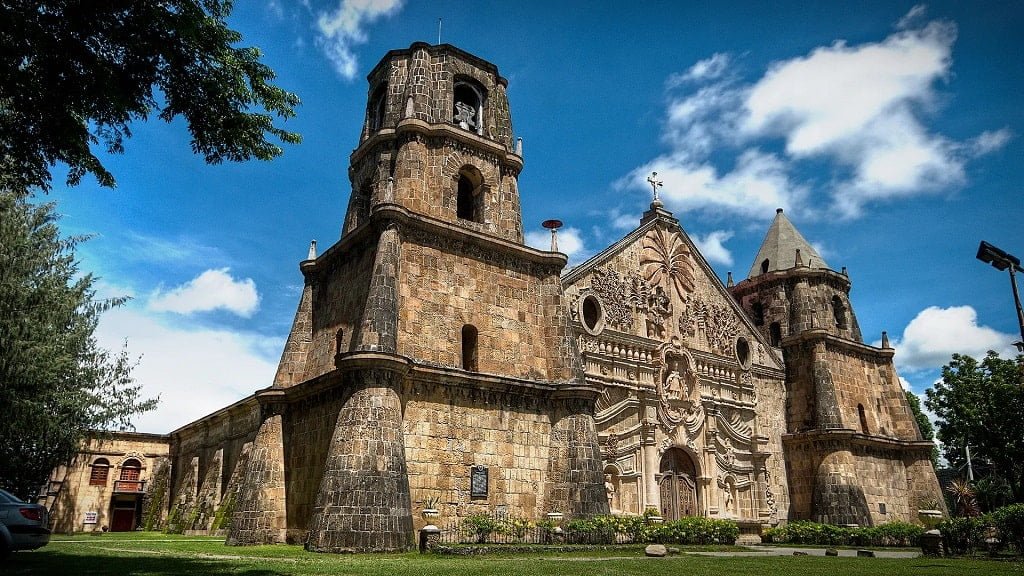
The Miagao Church is a Baroque church located in Miagao in Iloilo. It was built during the Spanish colonial period in the Philippines and features a unique blend of European and local influences. The church was inscribed on the World Heritage List in 1993 and named a UNESCO World Heritage Site in 1999.
9. Santa Maria Church (Ilocos Sur)
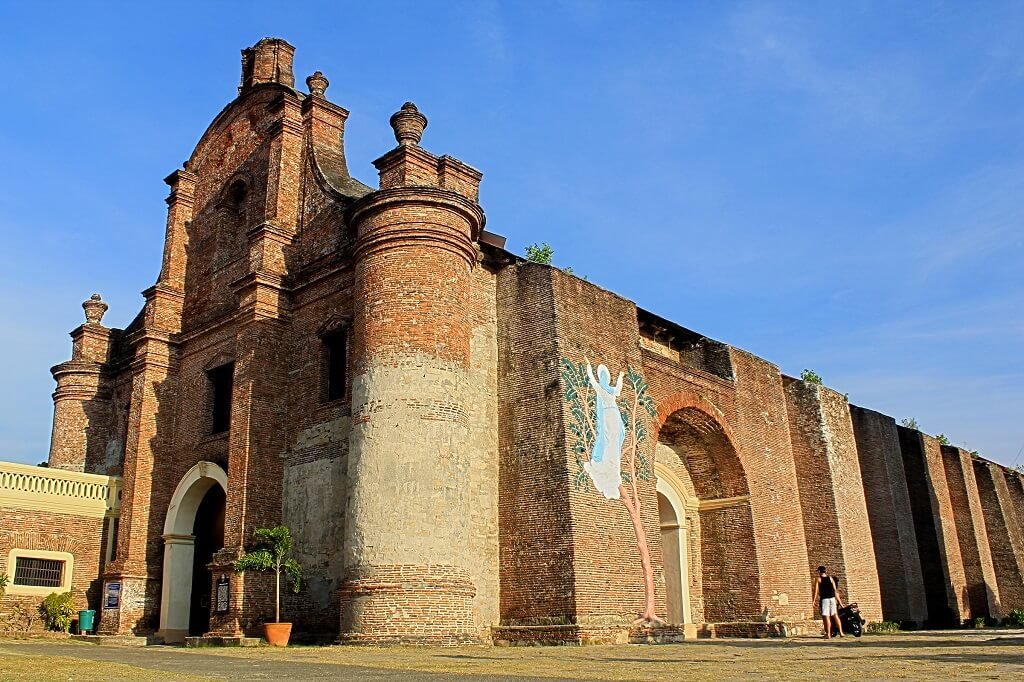
In the Ilocos Sur town of Santa Maria sits the Santa Maria Church, a Baroque structure. Its distinctive fusion of local and European influences was built during the Spanish colonial era in the Philippines. In 1993, the church was added to the World Heritage List, and in 1999, it was designated as a UNESCO World Heritage Site.
10. Baroque Churches of the Philippines
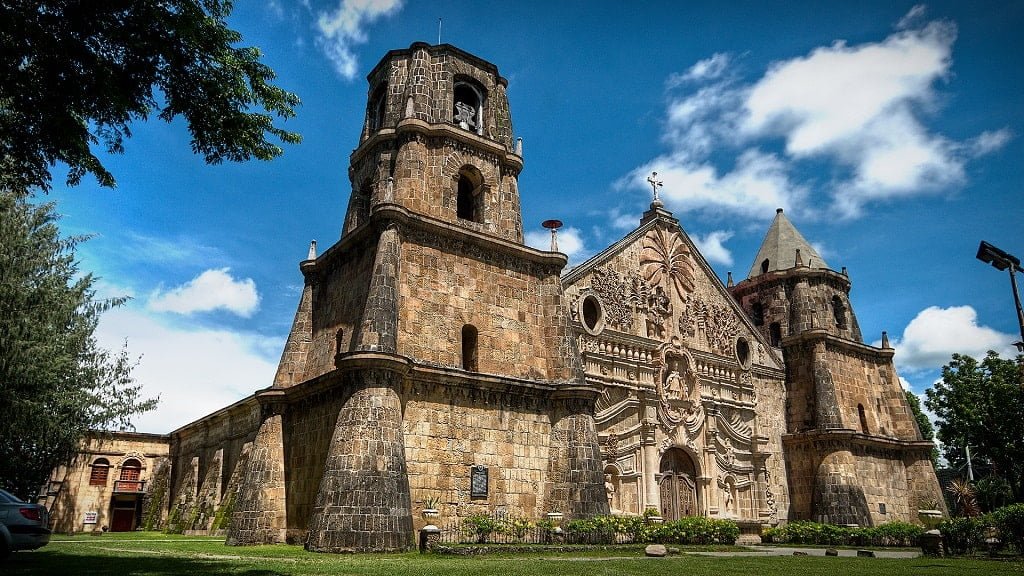
The Baroque Churches of the Philippines is a serial inscription consisting of four Roman Catholic churches constructed between the 16th and 18th centuries in the Spanish period of the Philippines.
They are located in separate areas of the Philippine archipelago: two on the northern island of Luzon, one at the heart of Intramuros, Manila, and one in the southwestern part of the Philippine island of Panay. The churches were inscribed on the World Heritage List in 1993 and named a UNESCO World.
Which does Unesco declare the most preserved historic city in the Philippines as a World Heritage Site?
Vigan, located in the province of Ilocos Sur, is the most preserved historic city in the Philippines that has been declared a World Heritage Site by Unesco. Vigan is considered the best-preserved example of a Spanish colonial town in Asia by Unesco, and it became a World Heritage Site in 1999.
The city of Vigan has retained much of its colonial architecture and design, making it a popular tourist destination for those who want to experience the Philippines’ rich history and culture. The city is known for its cobblestone streets, colonial houses, and baroque churches that are well-preserved and maintained.
One of the most notable landmarks in Vigan is the Calle Crisologo, a street lined with Spanish-style houses that have been converted into souvenir shops, restaurants, and museums. Visitors can stroll down this street and immerse themselves in the city’s rich history and culture.
What Cultural heritages in the Philippines have been Declared by UNESCO as world heritage?
The Philippines is a country with a rich cultural heritage that has been preserved and protected by UNESCO. UNESCO has designated six cultural sites in the Philippines as World Heritage Sites. These sites have been recognized for their cultural and historical significance and represent the country’s unique cultural identity.
The six cultural sites in the Philippines that have been decreed by UNESCO as World Heritage Sites are:
Baroque Churches of the Philippines – These churches are located in four different provinces of the Philippines and were built during the Spanish colonial period. They are known for their unique Baroque architecture and ornate decorations.
Historic Town of Vigan – This town is located in the northern part of the Philippines and is known for its well-preserved Spanish colonial architecture. It is a prime example of a Spanish colonial city in Asia.
Rice Terraces of the Philippine Cordilleras – The Ifugao people constructed these terraces more than 2,000 years ago, and they are situated in the northern region of the Philippines. They serve as evidence of the Ifugao people’s inventiveness and resourcefulness.
Puerto Princesa Subterranean River National Park – This park is located in the western part of the Philippines and is home to an underground river that flows through a limestone cave. It is one of the most unique natural wonders in the world.
Tubbataha Reef National Marine Park – This Sulu Sea park has a wide variety of marine life, home to over 600 fish and 360 different kinds of coral. It is among the world’s most biodiverse regions.
Mount Hamiguitan Range Wildlife Sanctuary – This sanctuary is located in the southern part of the Philippines and is home to various endemic plant and animal species. It is a prime example of a unique and fragile ecosystem.
Frequently Asked Questions (FAQs)
How many UNESCO World Heritage Sites are there in the Philippines?
As of 2023, there are eight UNESCO World Heritage Sites in the Philippines. These sites are recognized for their cultural and natural significance and are protected by UNESCO.
What are the most visited heritage sites in the Philippines?
The most visited heritage sites in the Philippines are the Historic City of Vigan, the Rice Terraces of the Philippine Cordilleras, and the Tubbataha Reef Marine Park.
Is Palawan included in the list of UNESCO World Heritage Sites?
Yes, Palawan has two UNESCO World Heritage Sites: the Puerto Princesa Subterranean River National Park and the Tubbataha Reef Marine Park.
Which historic city in the Philippines is the most preserved and recognized by UNESCO?
The Historic City of Vigan in Ilocos Sur is the most preserved historic city in the Philippines and is recognized by UNESCO as a World Heritage Site.
Can you name some tangible cultural heritage sites in the Philippines?
Some tangible cultural heritage sites in the Philippines are the Baroque Churches, the Rice Terraces of the Philippine Cordilleras, and the Historic City of Vigan.
What natural heritage sites in the Philippines are protected by UNESCO?
The natural heritage sites in the Philippines protected by UNESCO are the Puerto Princesa Subterranean River National Park, the Tubbataha Reef Marine Park, and the Mount Hamiguitan Range Wildlife Sanctuary.
Conclusion
This article has highlighted some of the Philippines’ most significant UNESCO World Heritage Sites. These sites are important not only for their cultural and natural significance but also for attracting millions of tourists each year. The Puerto Princesa Underground River, the Rice Terraces of the Philippine Cordilleras, and the well-preserved Spanish-era Historic City of Vigan are just a few examples of the Philippines’ incredible sites.
Remembering the value of preserving these sites for future generations is important. By protecting these landmarks, we can ensure their continued cultural and historical significance. Additionally, visiting these sites can be a great way to learn about the country’s rich history and culture.
Readers are encouraged to engage with this topic by visiting these sites, sharing their experiences on social media, and learning more about the Philippines’ cultural heritage. By taking these actions, we can help ensure that these sites remain preserved and celebrated for years.
















[…] for its stunningly crystal-clear lakes, majestic mountains, and abundant wildlife, Banff is a UNESCO World Heritage Site that exemplifies the rugged alpine wilderness of western […]
[…] central location makes it an ideal base for day trips to a variety of attractions. From UNESCO World Heritage Sites to natural wonders and from historical towns to cultural experiences, the surroundings of Prague […]
[…] Day 2, journey to the Atlas Mountains, enjoying the scenic route to Ait Benhaddou, a UNESCO World Heritage site known for its iconic kasbahs and as a backdrop for many films. The day ends in Ouarzazate, the […]
[…] across the country. From the opulent Grand Palace in Bangkok to the ancient ruins of Ayutthaya, the historical sites in Thailand offer a glimpse into the rich heritage of this enchanting destination. Immerse yourself […]
[…] As a UNESCO World Heritage Site, Ayutthaya is a historical treasure trove, featuring ancient ruins, temples, and palaces that […]
[…] as a wrap or paired with almost any dish. It’s also recognized by UNESCO as an intangible cultural heritage of humanity, highlighting its significance in Armenian […]
[…] lush rainforests, pristine Caribbean beaches, and the magnificent Mayan ruins at Copán, a UNESCO World Heritage site. This diverse country also boasts the second-largest barrier reef in the world, the Mesoamerican […]
[…] National Park, a UNESCO World Heritage Site, is a marvel of nature known for its breathtaking landscapes and diverse ecosystems. Nestled in the […]
[…] Crater: This UNESCO World Heritage site is a massive volcanic caldera with rich biodiversity, providing a microcosm of East African […]
[…] well-preserved medieval architecture and vibrant atmosphere. The Fes el-Bali, or Old Medina, is a UNESCO World Heritage site and the heart of the […]
[…] iconic Canal Belt, a UNESCO World Heritage site, is best experienced on foot. Walking along the canals, you’ll learn about the architectural […]
[…] over 47 UNESCO World Heritage sites, Spain is home to an array of Atlantic and Mediterranean beaches, along with a vibrant festival […]
[…] UNESCO World Heritage sites, like Hallasan National Park, Seongsan Ilchulbong (Sunrise Peak), and Manjanggul Lava Tube, are […]
[…] and stunning landscapes year-round. The volcanic terrain of Teide National Park in Tenerife is a UNESCO World Heritage site and a must-see for nature lovers. The beaches of Lanzarote, along with the dunes of Maspalomas, […]
[…] Old Town of Quebec, a UNESCO World Heritage site, looks stunning with its snow-dusted cobblestone streets and historic buildings. Warm up in cozy […]
[…] sits high in the Andes Mountains, enveloped by lush cloud forests and steep escarpments. This UNESCO World Heritage Site, often referred to as the “Lost City of the Incas,” was unknown to the outside world […]
[…] history, culture, and natural beauty. This ancient city, carved into the mountains, is not only a UNESCO World Heritage site but also one of the New Seven Wonders of the World. Honeymooners can explore the archaeological […]
[…] established in 930 AD, making it one of the oldest parliamentary meeting places in the world. This UNESCO World Heritage Site is also located directly on the Mid-Atlantic Ridge, where the North American and Eurasian tectonic […]
[…] between the North American and Eurasian tectonic plates. Located in Þingvellir National Park, a UNESCO World Heritage Site, Silfra is one of the most geologically significant dive locations in the […]
[…] UNESCO World Heritage Site, Kiyomizu-dera sits on a hillside with stunning views over Kyoto. Its wooden terrace, built without […]
[…] effective places, has attracted various visitors. With everything from soft white sand beaches to UNESCO World Heritage sites, there is something for every traveler. Here are some of the top tourist destinations in the […]
[…] a designated UNESCO World Heritage Site, Xochimilco stands as a living testament to ancient ingenuity, modern tradition, and the undeniable […]
Comments are closed.